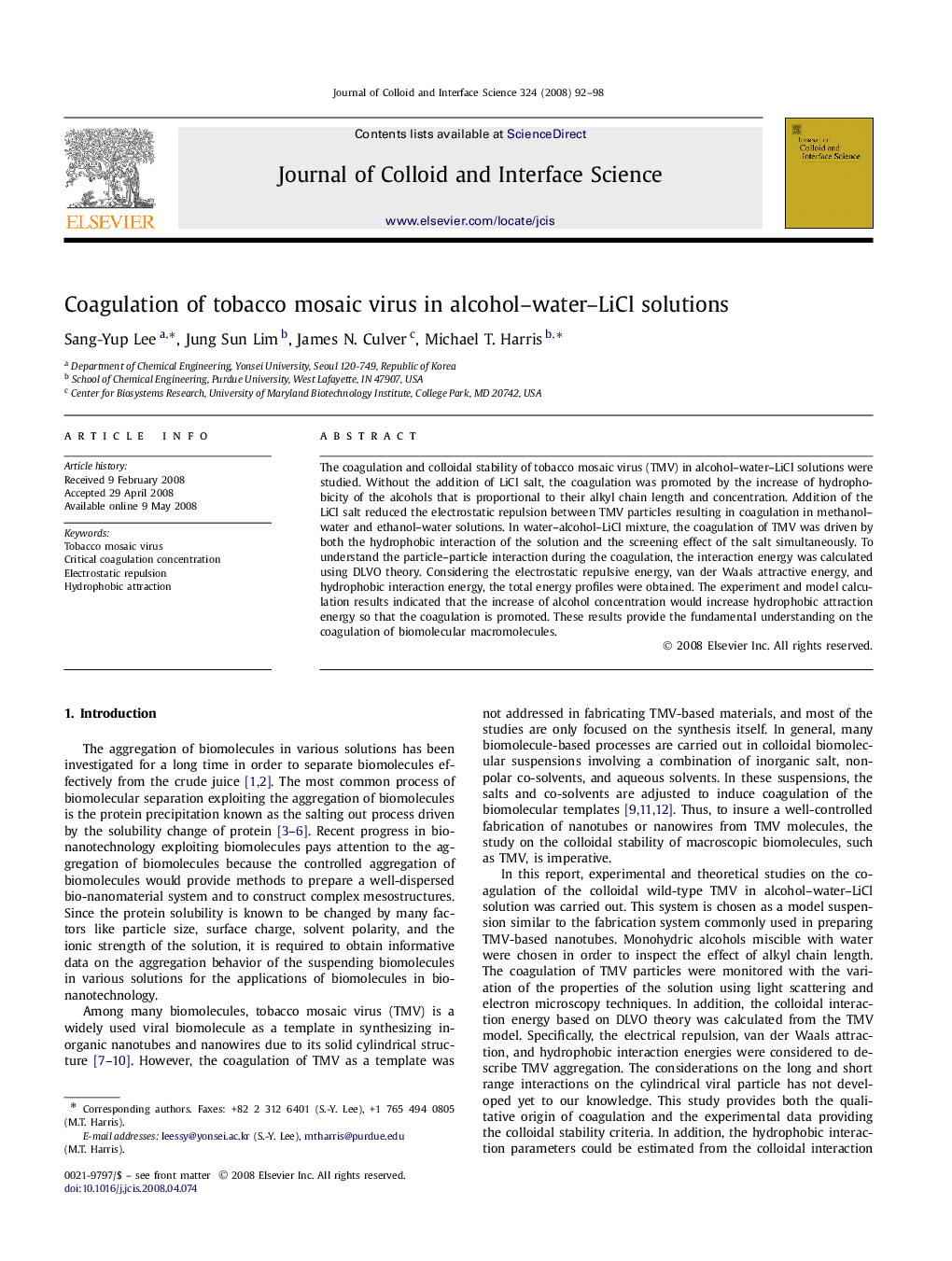| Article ID | Journal | Published Year | Pages | File Type |
|---|---|---|---|---|
| 611091 | Journal of Colloid and Interface Science | 2008 | 7 Pages |
The coagulation and colloidal stability of tobacco mosaic virus (TMV) in alcohol–water–LiCl solutions were studied. Without the addition of LiCl salt, the coagulation was promoted by the increase of hydrophobicity of the alcohols that is proportional to their alkyl chain length and concentration. Addition of the LiCl salt reduced the electrostatic repulsion between TMV particles resulting in coagulation in methanol–water and ethanol–water solutions. In water–alcohol–LiCl mixture, the coagulation of TMV was driven by both the hydrophobic interaction of the solution and the screening effect of the salt simultaneously. To understand the particle–particle interaction during the coagulation, the interaction energy was calculated using DLVO theory. Considering the electrostatic repulsive energy, van der Waals attractive energy, and hydrophobic interaction energy, the total energy profiles were obtained. The experiment and model calculation results indicated that the increase of alcohol concentration would increase hydrophobic attraction energy so that the coagulation is promoted. These results provide the fundamental understanding on the coagulation of biomolecular macromolecules.
Graphical abstractColloidal interaction energy between two tobacco mosaic viruses was investigated through the experiment and theoretical analysis.Figure optionsDownload full-size imageDownload as PowerPoint slide
